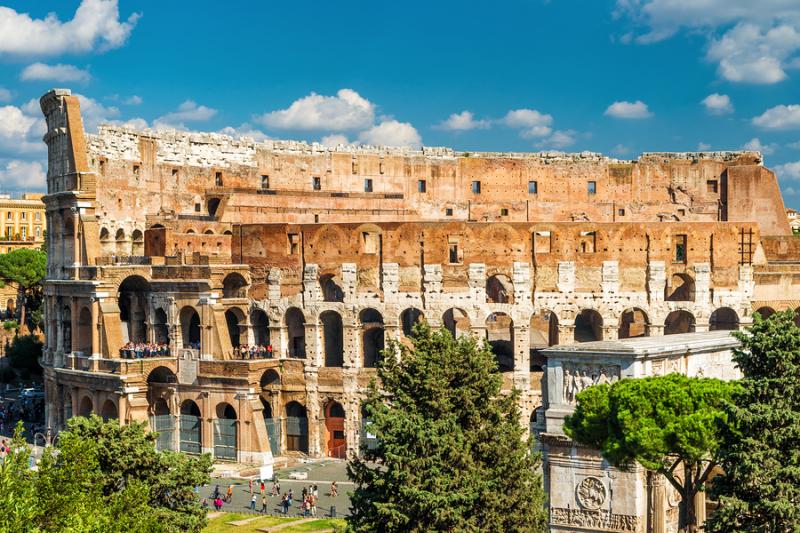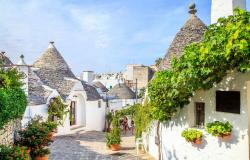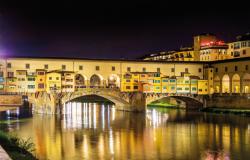Unesco Sites of Italy: Rome
ITA:

Of the 55 Unesco sites that are in Italy, Rome may be the most obvious. The capital of Italy, once the capital of the Roman Empire, has preserved some of the major monuments of antiquity, extraordinary archaeological areas integrated in the urban fabric, testimonies of incomparable artistic value produced over almost 3,000 years of history.
The site encompasses the whole historic center of Rome within the city walls at their widest extent in the 17th century, as well as the Basilica of St. Paul’s Outside the Walls. It also includes the ‘Properties of the Holy See,’ such as the basilicas of St. John Lateran and St. Mary Major.
Rome, caput mundi, was founded according to legend in 753 BC by twins Romulus and Remus on the banks of the Tiber river. First the capital of the Roman Republic, Rome became the center of one of the greatest empires of antiquity and, thereafter, the heart of Christian spirituality.
Rome represents a unique example of the succession of the different eras of Western civilization because it encompasses areas of different historical periods within a unitary urban fabric. “Ancient Rome was followed, from the 4th century on, by Christian Rome. The Christian city was built on top of the ancient city, reusing spaces, buildings and materials. From the 15th century on, the Popes promoted a profound renewal of the city and its image, reflecting the spirit of the Renaissance classicism and, later, of the Baroque,” according to Unesco.
The site includes some of the major monuments of antiquity such as the Forums, the Mausoleum of Augustus, the Mausoleum of Hadrian, the Pantheon, Trajan’s Column and the Column of Marcus Aurelius, as well as the religious and public buildings of papal Rome.
“Over the centuries, the works of art found in Rome have had a decisive influence on the development of urban planning, architecture, technology and the arts throughout the world,” writes Unesco. “The achievements of ancient Rome in the fields of architecture, painting and sculpture served as a universal model not only in antiquity, but also in the Renaissance, Baroque and Neoclassical periods.”
The civilization brought on by the Roman Empire remains the basis of Western culture.
Dei 55 siti Unesco in Italia, Roma potrebbe essere il più ovvio. La capitale d'Italia, un tempo capitale dell'Impero Romano, conserva alcuni dei principali monumenti dell'antichità, straordinarie aree archeologiche integrate nel tessuto urbano, testimonianze di incomparabile valore artistico prodotte in quasi 3000 anni di storia.
Il sito comprende l'intero centro storico di Roma, all'interno delle mura della città nella loro massima estensione nel 17° secolo, così come la Basilica di San Paolo fuori le mura. Include anche le ‘Proprietà della Santa Sede’, come le basiliche di San Giovanni in Laterano e Santa Maria Maggiore.
Roma, caput mundi, fu fondata secondo la leggenda nel 753 a.C. dai gemelli Romolo e Remo sulle rive del fiume Tevere. Prima capitale della Repubblica Romana, Roma divenne poi il centro di uno dei più grandi imperi dell'antichità e, successivamente, il cuore della spiritualità cristiana.
Roma rappresenta un esempio unico della successione delle diverse epoche della civiltà occidentale perché comprende aree di diversi periodi storici all'interno di un tessuto urbano unitario. “L'antica Roma fu seguita, dal IV° secolo in poi, dalla Roma cristiana. La città cristiana è stata costruita sopra la città antica, riutilizzando spazi, edifici e materiali. Dal XV° secolo in poi, i Papi promossero un profondo rinnovamento della città e della sua immagine, riflettendo lo spirito del classicismo rinascimentale e, successivamente, del Barocco,” riporta l'Unesco.
Il sito comprende alcuni dei principali monumenti dell'antichità come i Fori, il Mausoleo di Augusto, il Mausoleo di Adriano, il Pantheon, la Colonna Traiana e la Colonna di Marco Aurelio, nonché gli edifici religiosi e pubblici della Roma papale.
"Nel corso dei secoli, le opere d'arte presenti a Roma hanno avuto un'influenza decisiva sullo sviluppo dell'urbanistica, dell'architettura, della tecnologia e delle arti in tutto il mondo", scrive Unesco. "Le conquiste dell'antica Roma nei campi dell'architettura, della pittura e della scultura sono servite da modello universale non solo nell'antichità, ma anche nei periodi rinascimentale, barocco e neoclassico."
La civiltà portata dall'impero romano rimane la base della cultura occidentale.











